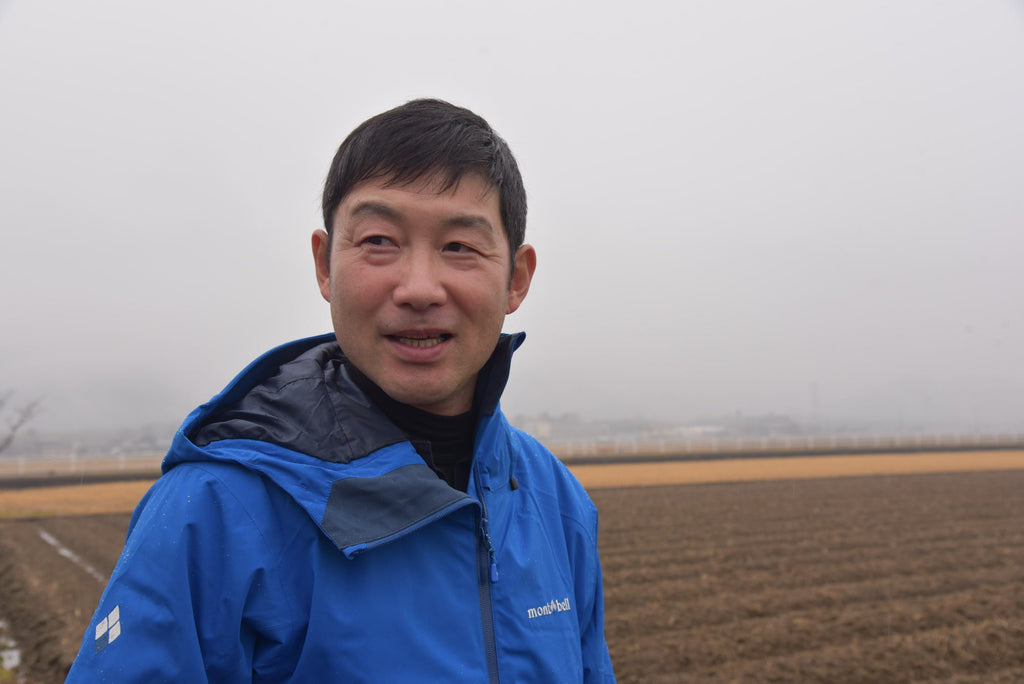
Walking into a sake brewery is like walking into someone's home. In the old days, it was customary that the kurabito (brewery workers) all stayed in shared housing at the brewery during the brewing season – people traveled from far and wide from their hometowns to work at the brewery for six months out of the year, leaving their families behind to make as much money as they could. The kurabito would be together for literally 24 hours a day – waking up at dawn, eating breakfast together, going through a grueling day of work, taking baths together, and sitting down for dinner with a few drinks before passing out. They become a family this way, whether they like it or not, which was probably the intention all along.
Our recent visit to Matsuse felt like this – stepping into someone's home, where the brewers all treated one another like family. The fit young onichan (elder brothers) all wore their uniforms with pride and looked up to their toji Keizo Ishida. It was mesmerizing to watch, them running from one end of the brewery to the other with a pail of rice on their shoulders; scooping freshly made rice into the drying machine; treating their koji with love and care.
Yoko and I pulled up to Matsuse Brewery on a Saturday morning – we realized how big Shiga Prefecture is as we traveled an hour to get there by taxi from Kita Brewery, also in Shiga. Every time we had told a local that we were going to Matsuse, they would raise their eyebrows and tell us they were famous and highly secretive, so we knew we were in for a treat. We had met Ishida-toji last year, when we hosted him at our shop for a Meet the Brewer event, and knew we wanted to visit him on our next trip to Japan.
Matsuse Brewery has been making sake since 1860 in the Ryuou area of Shiga Prefecture – they are the makers of the popular sake line Matsu no Tsukasa, which we carry at Umami Mart. They use organic practices for their rice growing, and as you'll see below,
We had asked him ahead of time if we could take photos of the shikomi (prep) for the day's batch of sake, and he kindly agreed. Wow, how lucky for us! We would get there right when the rice had finished steaming, and Yoko and I would be ready to photograph and video.
 A sake brewer's version of scrubs
A sake brewer's version of scrubs
 Gathering around the freshly steamed vat of rice
Gathering around the freshly steamed vat of rice


 Mahiro Hishida loads the pail of rice onto his shoulder and runs it to the next room
Mahiro Hishida loads the pail of rice onto his shoulder and runs it to the next room
 Rice gets dumped here in the main room in preparation for koji
Rice gets dumped here in the main room in preparation for koji
 The rice is evenly divided and laid out on large sheet pans
The rice is evenly divided and laid out on large sheet pans
 Spreading out the rice to cool down
Spreading out the rice to cool down
 Ishida-toji overseeing the rice prep
Ishida-toji overseeing the rice prep
 President Tadayuki Matsuse
President Tadayuki Matsuse
 Ichitaro Kobayashi loads rice onto the drying machine
Ichitaro Kobayashi loads rice onto the drying machine
 The rice spits out from the conveyor belt into this tank
The rice spits out from the conveyor belt into this tank

A rain of rice
 The tank is filled with water, freshly steamed rice, and ice to cool down the temperature as fast as possible
The tank is filled with water, freshly steamed rice, and ice to cool down the temperature as fast as possible
 Kazunari Hara is an incredibly fit kurabito had the arduous task of stirring this mash, mixing the ice, water, and rice. Sake making continues to be a very physical task.
Kazunari Hara is an incredibly fit kurabito had the arduous task of stirring this mash, mixing the ice, water, and rice. Sake making continues to be a very physical task.
 Taking the rice into the koji room
Taking the rice into the koji room
 Ishida-toji training President Matsuse's son Hiroyoshi to make koji
Ishida-toji training President Matsuse's son Hiroyoshi to make koji
 Spreading koji onto the rice
Spreading koji onto the rice
 Kneading the koji spores into the rice. They make a new batch of koji daily. The room was sweltering.
Kneading the koji spores into the rice. They make a new batch of koji daily. The room was sweltering.
 Taking koji inoculated rice upstairs. This building is over a century old
Taking koji inoculated rice upstairs. This building is over a century old
 President Matsuse swirling the koji
President Matsuse swirling the koji
 Koji - it was super chewy and tasted spritzy
Koji - it was super chewy and tasted spritzy
Ishida-toji was so kind to take us around to two of the plots of land they own to grow rice. Ishida-san is a terroir nut who believes that the differences in soil can affect the flavor of the rice, thus changing the flavors of the sake. This makes sense to me!




Back at the brewery we had a lengthy kikizake (sake tasting) where we were able to try his more experimental sakes of the last few years. His focus now is expressing terroir through the different plots of land they own around Shiga, as well as blending sakes. This month we are proud to feature Ishida-toji's first ever blended sake Cuvee Isabel for Sake Gumi.





Comments (0)
There are no comments for this article. Be the first one to leave a message!